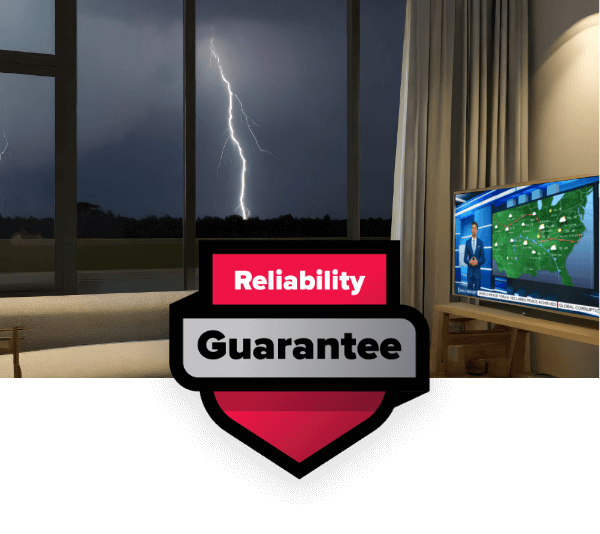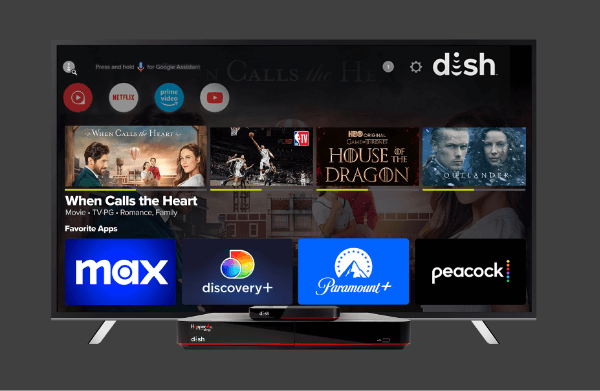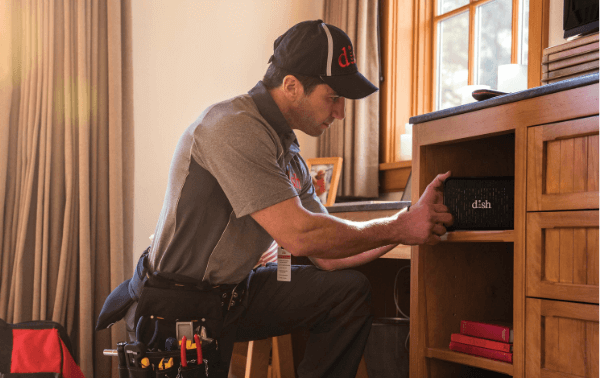Is It Time to Ditch Cable Internet for Fiber?
Table of Contents
It’s Tuesday night, and you’ve finally settled in to watch “Beat Bobby Flay" on Food Network. The challenger is making a killer-looking seafood risotto, and Bobby’s looking nervous for once. Just as the mystery ingredient gets revealed—BAM!—the spinning wheel of doom appears on your screen. Your cable internet has decided to take a dinner break right at the climactic moment.
You frantically refresh, restart your streaming app, and even do that age-old ritual of unplugging your router for ten seconds. By the time your connection limps back to life, Bobby’s already declared victory, and you’re left wondering if that challenger’s risotto was as amazing as it looked before your internet betrayed you.
This scenario plays out in millions of homes every single night. Maybe it’s not Bobby Flay—perhaps it’s your favorite true crime documentary, the season finale of that show everyone’s talking about, or worse yet, a work presentation that freezes right when your boss asks that important question.
Here’s the plot twist your evening entertainment has been waiting for: fiber optic internet. This isn’t just some fancy tech upgrade that only benefits computer nerds—it’s the difference between watching Bobby Flay’s confident smirk in crystal-clear 4K and staring at a pixelated mess that resembles abstract art more than culinary mastery. Ready to discover what life looks like when your internet actually keeps up with your binge-watching ambitions?
What Makes Fiber Internet Different From Cable Internet?
Cable internet relies on coaxial cables, the same type of copper wire that has been delivering television signals for decades. These cables send electrical signals that can slow down, especially during peak usage times when your entire neighborhood is online. Think of it like a highway that gets congested during rush hour—everyone has to slow down.
Fiber optic internet operates completely differently. Instead of electrical signals traveling through copper, fiber-optic cables use pulses of light traveling through ultra-thin glass strands. Light travels at incredible speeds and doesn’t slow down based on the number of people using the network. It’s like having your own private jet instead of being stuck in traffic.
This fundamental difference creates a domino effect of improvements that touch every aspect of your internet experience. Fiber delivers symmetrical speeds, meaning your upload speed matches your download speed. This symmetry proves crucial for video calls, cloud backups, and sharing large files. Cable internet typically offers much slower upload speeds, which explains why your video calls might look great on your end but appear choppy to others.

Speed redefined
What Fiber Brings to Your Digital Life
Speed represents the most obvious advantage of fiber internet, but the impact goes beyond faster downloads. Fiber delivers speeds ranging from 100 Mbps to 10 Gbps, while cable internet maxes out around 1 Gbps in ideal conditions.
However, speed consistency matters more than peak speeds. Cable internet speeds fluctuate throughout the day based on neighborhood usage patterns. During peak hours—typically evenings when everyone’s streaming, gaming, and browsing—cable speeds can drop significantly. Fiber maintains consistent speeds, regardless of the time of day or the number of neighbors online.
This consistency transforms how you use the internet. Multiple family members can stream 4K content while someone else participates in a video conference and another person plays games online, all without anyone experiencing slowdowns. Large file uploads that once took hours now upload in minutes. Cloud backups occur seamlessly in the background, without interrupting other activities.
Gaming enthusiasts particularly notice the difference. Fiber’s low latency—the time it takes for data to travel from your device to game servers and back—gives competitive gamers a real advantage. While cable internet latency can vary significantly, fiber provides consistently low latency, which keeps you competitive.
Why Fiber Keeps You Connected When Cable Internet Fails
Speed grabs headlines, but reliability often determines satisfaction with your internet service. Fiber optic cables resist interference that commonly affects cable internet connections.
Weather represents a major reliability factor. Cable internet signals can degrade during storms, high winds, or extreme temperatures. The copper wires are susceptible to electromagnetic interference from other electronic devices, power lines, and even radio signals. Fiber optic cables remain unaffected by these issues because they transmit light signals through glass, not electrical signals through metal.
Construction work in your neighborhood poses another reliability challenge for cable internet. Accidentally severed copper cables can disrupt service for hours or even days. While fiber cables can also be damaged during construction, the network architecture typically includes redundant pathways that maintain service even when individual cables are damaged.
The infrastructure supporting fiber networks is generally newer and better maintained than aging cable systems. Many cable networks were installed decades ago and are showing their age. Fiber networks represent substantial new investments by providers who understand the importance of reliability in our connected world.
What to Expect During Your Fiber Transition
Many people delay switching to fiber because they worry about the installation process. Understanding what actually happens removes much of the anxiety and helps you prepare properly.
The fiber installation process typically occurs in two phases. The first phase happens at the neighborhood level, often before you even schedule service. Fiber providers work with local utilities to run fiber optic cables from regional hubs to local distribution points in your neighborhood. This infrastructure work can take weeks or months, but it happens without disrupting your current service.
The second phase brings fiber directly to your home. This appointment typically requires 2-4 hours of your time. The technician will determine the optimal route to bring fiber into your home, typically following existing cable or telephone line paths. They’ll install an Optical Network Terminal (ONT) inside your home, which converts the light signals from the fiber cable into electrical signals your devices can use.
Most providers include a router as part of the installation, eliminating the need to purchase additional equipment immediately. The technician will test all connections, ensure your devices connect properly, and walk you through the new system before leaving.
Some homes require minimal additional work, while others might need more extensive installation. Factors affecting installation complexity include the distance from the street to your home, existing utility connections, and the type of construction used in your home. Most installations proceed smoothly, but understanding these variables helps set appropriate expectations.

Equipment differences
From Cable Modems to Optical Network Terminals
Transitioning from cable to fiber means upgrading your home networking equipment. While this might seem daunting, the equipment changes actually simplify your setup and often improve reliability.
Cable internet requires a cable modem that converts the electrical signals from your cable line into digital data your devices can use. These modems can overheat, especially older models, which can lead to connection drops and speed reductions. Many cable customers also require separate routers to set up Wi-Fi networks and connect multiple devices.
Fiber internet uses an Optical Network Terminal (ONT) instead of a traditional modem. The ONT converts light signals from the fiber cable into electrical signals, operating more efficiently and reliably than cable modems. ONTs rarely overheat and typically last longer than cable modems.
Most fiber providers include both the ONT and a high-quality router as part of their service package. This equipment is usually newer and more capable than what many customers use with cable internet. The included routers often support the latest Wi-Fi standards and can handle the high speeds that fiber delivers.
If you prefer using your own router, fiber systems typically accommodate this preference more easily than cable systems. The standardized nature of fiber connections means that most quality routers work well with fiber service, providing you with flexibility in customizing your home network.
Understanding the Financial Impact
Cost concerns often influence the decision to switch from cable to fiber. However, a complete cost analysis reveals that fiber frequently offers better value despite sometimes higher monthly rates.
Fiber internet pricing has become increasingly competitive as more providers enter markets and infrastructure costs decrease. Many areas now offer fiber internet at prices comparable to or lower than cable internet, especially when comparing similar speed tiers.
The total cost of ownership often favors fiber when you consider equipment costs, service fees, and reliability factors. Cable internet providers often charge equipment rental fees for modems and routers, adding $10-$ 15 to your monthly bill. Fiber providers typically include equipment at no additional charge, eliminating these ongoing fees.
Hidden fees represent another cost consideration. Cable providers often add charges for installation, service calls, and equipment upgrades. Fiber providers generally offer more transparent pricing with fewer surprise charges. The improved reliability of fiber also reduces the likelihood of service calls and related fees.
Long-term contracts present different cost implications for cable versus fiber. Cable providers often require lengthy contracts with early termination fees. Many fiber providers offer month-to-month service or shorter contract terms, providing more flexibility if your needs change.
How Fiber Transforms Your Viewing Experience
The entertainment landscape has shifted dramatically toward streaming services, and fiber internet unlocks the full potential of these platforms. While cable internet can struggle with multiple streams or high-resolution content, fiber handles even the most demanding entertainment scenarios effortlessly.
4K streaming represents a particularly stark difference between cable and fiber performance. A single 4K stream requires approximately 25 Mbps of consistent bandwidth. Cable internet might provide sufficient speed on paper, but the variable nature of cable connections can cause buffering and quality drops during peak usage times. Fiber’s consistent speeds ensure smooth 4K streaming regardless of network congestion.
Multiple streams compound the advantages of fiber. A household with multiple family members streaming different content simultaneously can quickly overwhelm cable internet capacity. Fiber easily handles multiple 4K streams while maintaining bandwidth for other activities like gaming, video calls, and general browsing.
Live streaming content, including sports and news, particularly benefits from fiber’s low latency. The reduced delay between the live event and your screen creates a more immediate viewing experience. For sports fans, this can mean seeing plays develop in real-time rather than experiencing the slight delays common with cable internet.
Gaming represents another entertainment category where fiber shines. Modern games require constant communication with servers, and fiber’s low latency provides competitive advantages in fast-paced games. Large game downloads that might take hours on cable internet complete in minutes on fiber connections.

Remote work made easier
Why Fiber Internet Matters for Your Career
The remote work revolution has made reliable internet essential for career success. Video conferences, cloud collaboration, and large file transfers have become daily requirements for millions of workers. Fiber internet transforms remote work from a series of technical challenges into a seamless experience.
Video conferencing quality improves dramatically with fiber internet. The symmetrical upload and download speeds ensure your video appears crisp and clear to other participants while you receive high-quality video from them. Cable internet’s limited upload speeds often result in pixelated or frozen video on your end, even when your internet speed seems adequate for downloading.
Cloud-based applications perform significantly better with fiber connections. Modern work increasingly relies on cloud platforms for document collaboration, project management, and data storage. These applications constantly sync data in the background, and fiber’s consistent speeds keep everything updated in real-time.
Large file transfers represent a major productivity advantage with fiber internet. Architects sharing building plans, designers collaborating on video projects, and consultants delivering presentation materials all benefit from fiber’s fast upload speeds. Tasks that might require overnight uploads on cable internet can be completed in minutes with fiber.
The reliability factor becomes crucial for remote workers whose careers depend on consistent connectivity. Client calls, team meetings, and project deadlines don’t accommodate internet outages. Fiber’s superior reliability reduces the stress and career risks associated with unreliable internet connections.
Ready to Experience the Fiber Difference?
The transition from cable to fiber internet is an investment in your digital future. Faster speeds, improved reliability, and superior performance across all your connected activities make fiber the clear choice for modern internet users.
The benefits extend beyond technical specifications to real improvements in daily life. Seamless video calls enhance your professional presence. Lag-free gaming keeps you competitive. Multiple family members can pursue their online activities simultaneously without conflicts. Smart home devices operate reliably. Streaming content plays without interruption.
Discover if Fidium Fiber is available in your area today. Enter your zip code here to check availability and take the first step toward lightning-fast, reliable internet that transforms your connection to the world. Your future self will thank you for making the switch to fiber—the internet technology that’s ready for whatever tomorrow brings.






 Call
Call 

 Access Your Account
Access Your Account